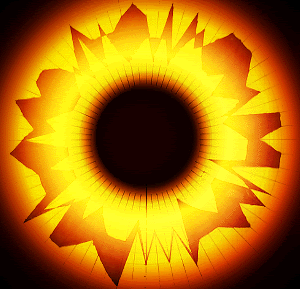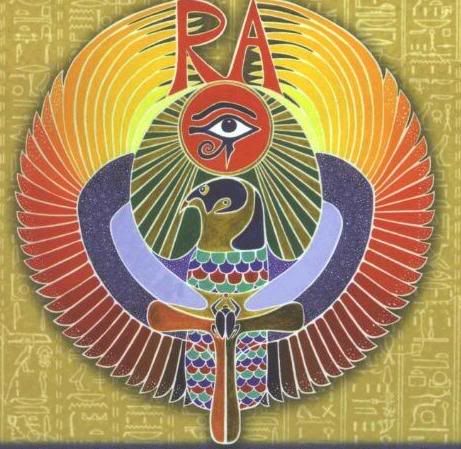Swan Knights and Swan Maidens
The gigantic passage grave encircled by a massive stone circle to be seen at Newgrange in Ireland's Boyne Valley is famous for its alignment towards the midwinter solstice. Each year the first sunlight penetrates a narrow corridor and enters a womb-like chamber at the heart of the monument, built c. 3000 BC. In it's an enchanting spectacle that befits its former identity as a sidhe, a house or palace, of the Tuatha de Danaan, the mythical first inhabitants of Ireland. In this guise it features in the old Irish tale known as 'The Dream of Angus', concerning a chieftain named Angus Mac Og, whose story relates how he fell in love with a swan-maiden after she visited him in a dream. After she agreed to marry him, they fly off to Newgrange in the form of swans, where they lived happily ever after. In Scottish folklore, Angus was married to the goddess Bride, who was herself a swan-maiden
Overlaying the stars on a map of Newgrange, they determined that the monument's interior echoes the arrangement of Cygnus's principal stars (see their site mythicalireland.com). Moreover, if the midwinter sunrise line is extended backwards some 15 kilometres (9 miles), it targets a smaller passage grave known as Fourknocks. This they found to be aligned perfectly to the rising of Deneb in c. 3000 BC. Thus the solsticial sun has to pass through a Deneb aligned site before reaching Newgrange, which is itself a terrestrial form of the swan, reflected in 'The Dream of Angus'
Similar tales of shape-shifting swan-maidens can be found across Northern and Central Europe. In these one of their number is usually caught and made to marry a mortal man, after he steals her cloak of feathers as she bathes with other swan-maidens. Such stories are linked also with the European tradition of 'Le Chevalier du Cygne ('Knight of the Swan'), descended of a swan-maiden M, creating the archaic belief that certain families and individuals were descended from a mythical swan-knight. These includes the Cleves family, from whom came Annes of Cleves, wife and queen of the English king Henry VIII, and Godfrei de Bouillon, the leader of the First Crusade.
http://www.andrewcollins.com/page/artic … ildren.htm
Children of the Swan
In the 1980s deep underground particle decay detectors in Europe and the United States, as well as ground-based air shower detectors, registered anomalous incoming cosmic rays unlike any others registered before. They bore a 'fingerprint' periodicity of 4.8 hours, previously recorded in connection with X-rays and infrared radiation coming from a binary star system named Cygnus X-3, located some 30,000 lights years away on the other side of our galaxy. Known to astrophysicists as a high mass X-ray binary, it consists of a tiny compact object, either a neutron star or black hole, that accretes, that is steals, mass from its huge companion, known as a Wolf-Rayet star. Visually speaking, Cygnus X-3 is located at the very centre of Cygnus's cross design, next to the star Sadr, even though dust and gas in the galactic plane obscure its presence in the optical range of frequencies.
In addition to the qualities outlined so far, the strange particles from Cygnus X-3 are uniquely able to penetrate hundreds of metres of solid rock before finally crashing into atomic nuclei to form secondary particles, detected by deep underground facilities around the world. No other point source cosmic ray, besides neutrinos - which are caused by nuclear fusion reactions in the sun and supernovae and pass through matter with almost no interaction - are known to do this. This has led to speculation that cygnets are produced by exotic strange quark matter inside Cygnus X-3's suspected neutron star. Despite claims from many particle physicists that this data has to be erroneous, Cygnus X-3's cosmic rays keep coming, being last reported again in 2000.
Could it be possible that these same particles from Cygnus X-3 were being experienced deep underground as far back as Palaeolithic times, and did they in some way affect the ancient mindset to look towards Cygnus as the source of cosmic life and death? The announcement in 2000 that Cygnus X-3 is quite possibly the first confirmed microblazar in the galaxy, with a one-side particle jet, or beam, pointing towards the Earth, has thrown considerable light on the nature of cygnets, and the importance of this binary star system. Galactic blazars produce jets with relativistic, i.e. light speed, acceleration, easily creating the means for cygnets to reach the earth in the manner that they do.
Did our most ancient ancestors somehow become subtly aware of the existence of Cygnus X-3, most obviously during psychedelic experiences in deep cave settings? Did they come to associate its proximity, i.e. the stars of Cygnus - Sadr and Deneb in particular - with cosmic creation and the transmigration of the soul?
Cosmic radiation might easily have contributed to changes in human behaviour, or even sudden accelerations in human evolution, especially during the Palaeolithic age, when cave art, cosmology, astronomy, intellect and possibly even transatlantic travel emerged for the first time. However, this would have been a subtle process that took place over countless generations, and away from the harsher influence of indiscriminate cosmic rays bombarding the planet's surface from a host of different point sources. More likely is that low level radiation, like that experienced by health seekers in radon mines today, was actually beneficial to the human body and mind, especially hundreds of metres underground where we know cosmic rays from Cygnus X-3 are able to penetrate.
radiation, mines, caves, shamans who see in the spirit world while under the effects of psychedelics
and then we have the Silver Elves, strontium, and the Sidhe, fairies
![]()
![]()






